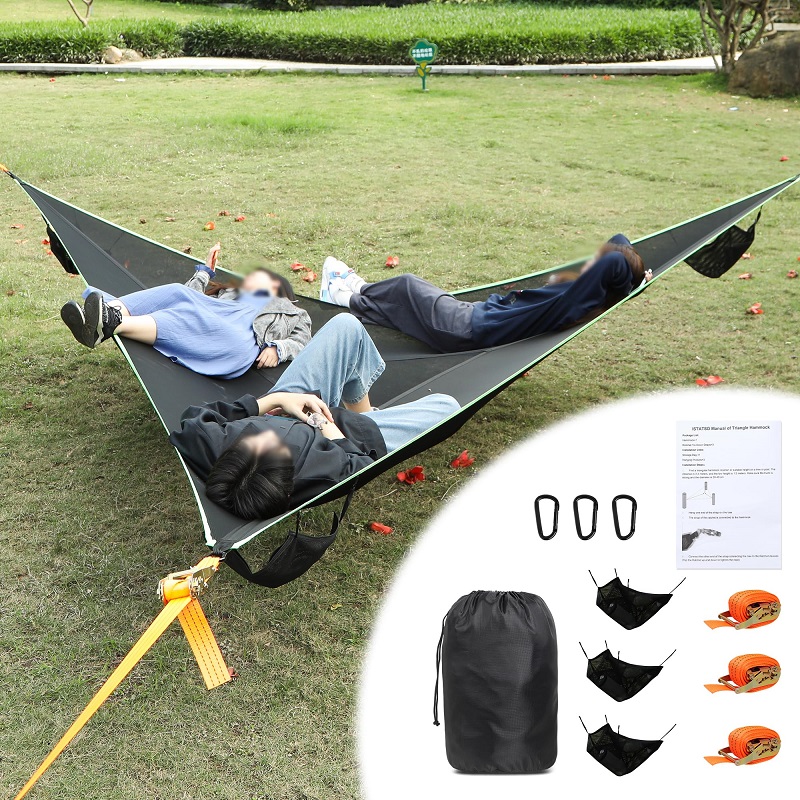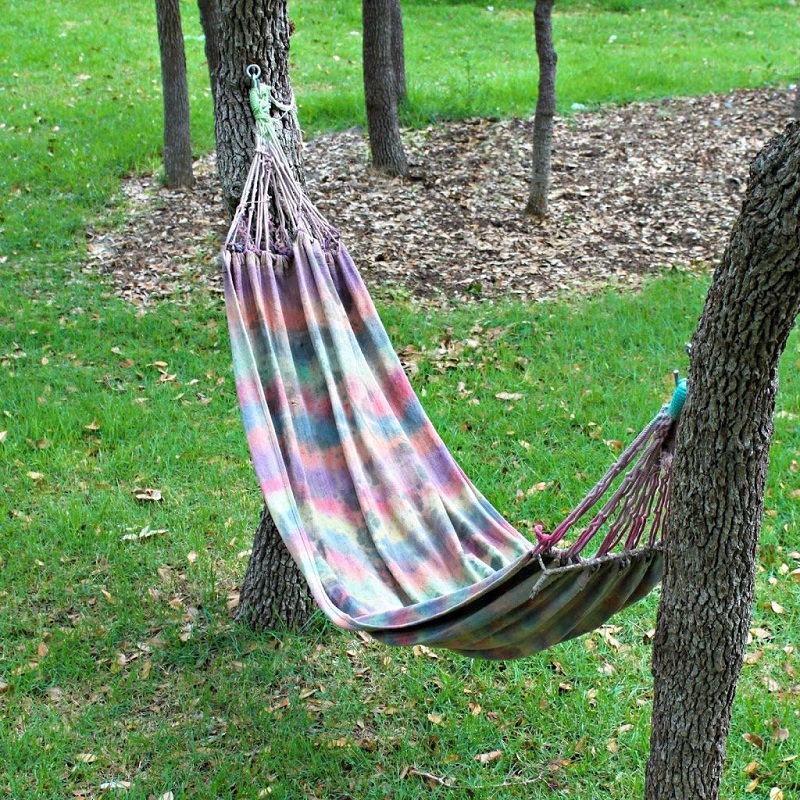Setting up a hammock correctly is essential for ensuring both comfort and stability. A properly installed hammock not only enhances relaxation but also prevents accidents and wear on the hammock itself. This guide will walk you through the essential steps and considerations for tying up a hammock effectively, maximizing both comfort and stability.
Understanding Your Hammock
Types of Hammocks
Before setting up your hammock, it’s crucial to understand the different types available. Hammocks come in several styles, including rope hammocks, fabric hammocks, and camping hammocks. Rope hammocks are typically made of braided or woven ropes, providing a breathable and supportive experience. Fabric hammocks, often crafted from cotton or synthetic materials, offer a smooth and comfortable surface. Camping hammocks are designed for portability and usually include features like integrated bug nets and rain flies. Knowing the type of hammock you have will influence how you tie it up and what considerations to keep in mind.
Materials and Components
The material of your hammocks will affect how it should be hung. Cotton hammocks, for instance, are more flexible and require a bit more stretch in the setup, while synthetic materials like nylon are less stretchy and need to be adjusted differently. Additionally, consider the hammock’s components such as the suspension system (straps or ropes) and the hardware (carabiners or hooks). Properly understanding these elements will ensure that you use the correct method for tying up your hammock.

Choosing the Right Location
Selecting the Perfect Spot
Choosing the right location for your hammock is crucial for comfort and stability. Ideally, you should look for two sturdy anchor points, such as trees or posts, that are about 10 to 15 feet apart, depending on the size of your hammock. Ensure that the anchor points are strong enough to support the combined weight of the hammocks and its occupants. Avoid locations with uneven ground or areas prone to high winds, as these can affect stability and comfort.
Considering the Height and Angle
The height and angle at which you hang your hammocks also play a significant role in its comfort and stability. Ideally, the hammocks should be hung so that its center is about 18 to 24 inches off the ground. This height allows for easy entry and exit while minimizing the risk of injury. The angle of the hammocks should be around 30 degrees relative to the ground. A too-tight hammock can be uncomfortable and strain the suspension system, while a too-loose hammock may sag excessively, making it difficult to get in and out.
Preparing the Anchor Points
Assessing Anchor Strength
Before attaching your hammocks, it’s essential to assess the strength and condition of your anchor points. For trees, choose healthy, mature trees with a diameter of at least 8 to 12 inches. Avoid trees with signs of rot or disease, as these may not provide the necessary support. If using posts or other man-made anchors, ensure they are securely installed and capable of supporting the weight of the hammocks.
Installing Hardware
If you are using hardware such as eye bolts or hammock hooks, install them securely into the anchor points. For trees, it’s often better to use tree straps to avoid damaging the bark. Attach the straps around the tree at a height that allows the hammock to hang at the desired level. Ensure the straps are level and evenly tensioned to provide a stable and comfortable setup.

Setting Up Suspension Straps or Ropes
Choosing the Right Suspension System
The suspension system you choose will impact how your hammock is tied up. Many modern hammocks come with built-in suspension straps that are easy to adjust and provide a secure hold. If you’re using ropes, make sure they are strong, durable, and designed for hammock use. Avoid using non-dedicated ropes or cords, as they may not provide the necessary strength and can wear out quickly.
Attaching and Adjusting the Straps
For suspension straps, attach them to the anchor points using secure knots or buckles. Ensure the straps are parallel to the ground and evenly tensioned. For rope setups, use reliable knots such as the bowline knot or the clove hitch to secure the ropes to the anchor points. Adjust the length of the suspension to achieve the desired height and angle for your hammocks. Test the setup by applying gentle pressure before fully committing to the final adjustment.
Positioning the Hammock
Hanging the Hammock
Once the suspension straps or ropes are in place, it’s time to hang the hammocks. Attach the hammock’s carabiners or end loops to the suspension system, ensuring that they are securely fastened. For a fabric hammock, make sure it is evenly distributed and not bunched up at the ends. For rope hammocks, ensure that the ropes are evenly tensioned and that the hammock is centered between the anchor points.
Adjusting for Comfort
After hanging the hammock, adjust its position to achieve maximum comfort. Lie in the hammock to test its feel and make any necessary adjustments to the height or angle. The ideal position should allow you to lie comfortably with a slight recline and without excessive sag. If using a camping hammock with additional features like a bug net or rain fly, ensure these elements are properly adjusted and secured.
Testing Stability and Comfort
Checking for Sags and Swings
Once the hammock is in place, check for any excessive sagging or swinging. Gently test the hammock by applying weight and observing how it behaves. If the hammocks sags too much, adjust the suspension system to raise it to the desired height. Ensure that the hammocks does not swing excessively, as this can affect stability and comfort.
Ensuring Even Tension
Ensure that the hammock is evenly tensioned across its length. Uneven tension can cause discomfort and wear on the hammocks. Adjust the suspension system as needed to achieve a balanced and comfortable setup. Pay attention to the hammock’s shape and ensure it maintains a gentle curve when occupied.

Maintaining Your Hammock Setup
Regular Inspections
Regularly inspect your hammock setup to ensure ongoing stability and comfort. Check the anchor points, suspension system, and hammock material for signs of wear or damage. Tighten any loose straps or ropes and replace any worn-out components as needed. Regular maintenance will help prolong the life of your hammocks and ensure a safe and comfortable experience.
Seasonal Considerations
Consider seasonal factors when setting up and maintaining your hammock. During wet or winter conditions, ensure that the hammock is protected from moisture and potential damage. Use protective covers if necessary and store the hammock in a dry place when not in use. Adjust the setup as needed to account for changes in temperature or weather conditions.
Final Thoughts
Tying up a hammock for maximum comfort and stability involves careful consideration of various factors, including location, suspension system, and hammocks type. By understanding these elements and following the steps outlined, you can create a comfortable and secure hammocks setup that enhances your relaxation experience. Regular maintenance and adjustments will ensure that your hammock remains a delightful addition to your outdoor or indoor space for years to come.
